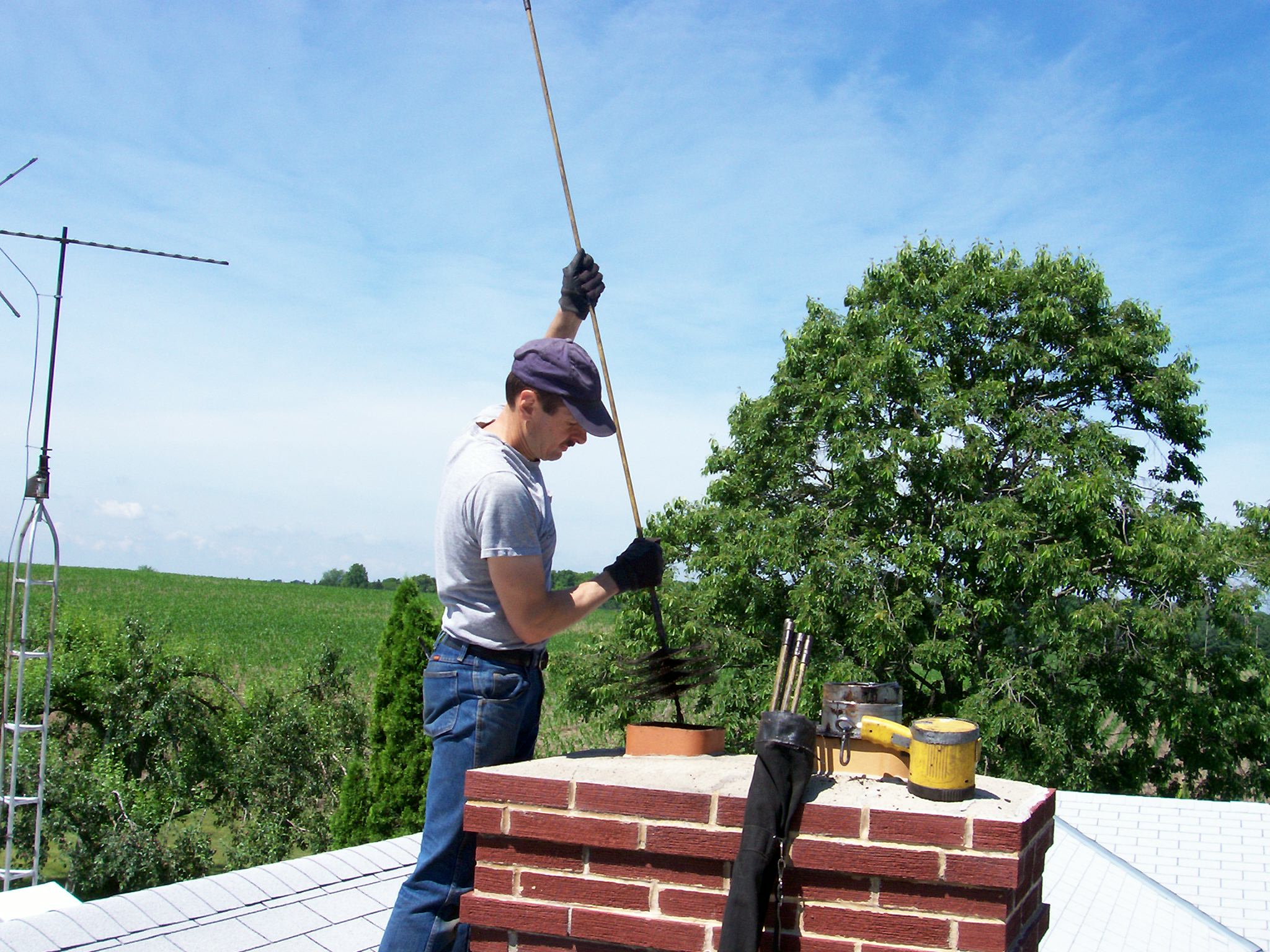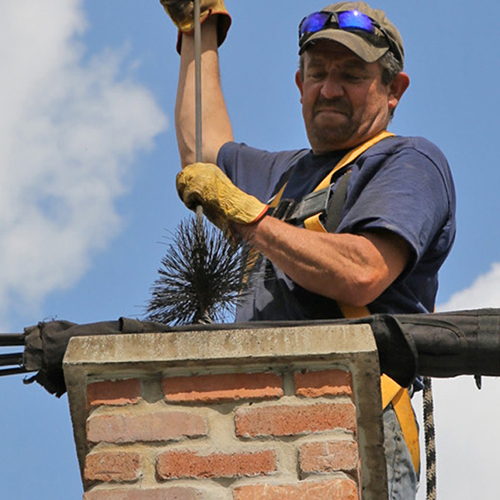Experience the Distinction: Chimney Clean San Jose for a Cleaner, Safer Home
Experience the Distinction: Chimney Clean San Jose for a Cleaner, Safer Home
Blog Article
Chimney Cleaning: A Step-by-Step Overview to Maintaining a Healthy And Balanced Fireplace
Keeping a healthy fireplace is crucial for the safety and security and performance of your home. Routine smokeshaft cleansing is a vital part of this maintenance routine. In this step-by-step guide, we will certainly give you with detailed instructions on exactly how to effectively clean your chimney, making certain that it operates optimally and decreases the threat of fire hazards. By following these guidelines, you will certainly find out just how to collect the necessary tools, carry out a visual assessment, clear debris and accumulation, move the smokeshaft, and finish the last steps for continuous maintenance. With a specialist approach and interest to information, you can with confidence care for your fireplace and appreciate its heat and convenience for many years to find.
Collecting the Needed Tools
To start the procedure of chimney cleaning, the primary step is to collect all the required tools. Having the right devices available guarantees a secure and effective cleaning process. The crucial tools for smokeshaft cleaning consist of a chimney brush, a ladder, drop towels or plastic sheets, a flashlight, gloves, and a dust mask.
The smokeshaft brush is the key tool made use of to eliminate residue and creosote buildup from the flue - Chimney Clean San Jose. It is crucial to choose a brush that matches the dimension and form of your chimney.
A flashlight is crucial for examining the smokeshaft's inside for any indications of damage or blockages. Handwear covers are essential to safeguard your hands from soot and various other unsafe substances, while a dust mask assists stop the breathing of particles.
Carrying Out a Visual Evaluation

Using a flashlight, very carefully examine the interior wall surfaces of the chimney for any kind of indications of damages, such as fractures, loosened blocks, or mortar deterioration. These issues can endanger the chimney's architectural integrity and posture a severe safety and security hazard. In addition, check for any indications of water damage, such as staining or efflorescence, as this can indicate a leaking smokeshaft cap or blinking.
Next, check the smokeshaft flue for any kind of blockages. Try to find the visibility of nesting materials, leaves, or debris that may have gathered with time (Chimney Clean San Jose). These obstructions can restrict airflow, enhance the threat of carbon monoxide build-up, and impede the chimney's ability to effectively air vent smoke
Throughout the visual inspection, pay close attention to the smokeshaft crown, which is the top surface that protects the chimney from moisture. Seek splits or missing out on items in the crown, as these can allow water to go into the smokeshaft and create significant damage.
Clearing Up Particles and Build-up
After completing the aesthetic examination, the following step in chimney cleaning involves clearing up debris and accumulation to make certain the correct performance of the fire place. Gradually, particles such as leaves, twigs, and animal nests can gather in the smokeshaft, blocking the circulation of air and creating potential fire dangers. Furthermore, the buildup of creosote, a tar-like substance, is a common issue in smokeshafts. Creosote is developed when timber or nonrenewable fuel sources are melted, and if not gotten rid of regularly, it can cause smokeshaft fires.
A chimney brush, specifically created for this function, is made use of to get rid of loose particles and creosote from the chimney wall surfaces. It is crucial to choose a brush that matches the dimension of your chimney to make sure effective cleaning.
To start, put the brush into the chimney and relocate it up and down, scrubbing the walls to displace any kind of debris or creosote. Once the cleaning is full, make use of a vacuum cleaner or a smokeshaft brush extension to remove Extra resources the dislodged debris from the fireplace.

Sweeping the Smokeshaft
The sweeping of the smokeshaft is an important action in keeping a healthy and balanced fireplace. With time, soot, creosote, and various other debris can collect in the chimney, blocking the circulation of air and potentially creating an unsafe buildup of flammable products. Routine chimney sweeper not just ensures correct air flow but also protects against the danger of smokeshaft fires.
When it comes to chimney sweeping, it is highly advised to employ a specialist chimney sweep. These professionals have the expertise and devices essential to safely and successfully eliminate the collected particles from your smokeshaft.
It is necessary to note that the frequency of smokeshaft sweeping relies on numerous aspects, such as the kind of fuel used, the amount of use, and more tips here the kind of smokeshaft. As a general guideline, it is advised to have your smokeshaft inspected and swept at least yearly.
Last Steps and Upkeep
After completing the smokeshaft sweeping process, the initial step in the last upkeep is to evaluate the chimney cap and stimulate arrestor. These components stop particles, pets, and rainwater from going into the smokeshaft.

Inspect the within the fireplace for any type of indications of degeneration, such as splits, loose bricks, or harmed mortar. These problems can impact the architectural stability and security of the fireplace. If any problems are discovered, speak with a professional chimney move or mason to resolve them without delay.
Ultimately, think about installing carbon monoxide detectors near the fireplace and throughout your home. These tools can identify the visibility of this unsafe gas, giving an early caution system in situation of a chimney malfunction. Frequently check and replace the batteries in these detectors to guarantee their performance.
Verdict
In final thought, adhering to a detailed guide for chimney cleansing is critical in keeping a healthy and balanced fire place. By collecting the required devices, carrying out a visual examination, getting rid of debris and accumulation, and sweeping the chimney, house owners can guarantee the safety and efficiency of their fire place.
The essential devices for smokeshaft cleansing include a chimney brush, a ladder, decrease cloths or plastic sheets, a flashlight, handwear covers, and a dust mask.
A smokeshaft brush, specifically created for this purpose, is used to remove loosened debris and creosote from the smokeshaft wall surfaces. Routine smokeshaft sweeping not just guarantees appropriate ventilation but also avoids the threat of smokeshaft fires.
When it comes to chimney sweeping, it is extremely advised to work with an expert chimney move. After finishing the smokeshaft sweeping look at more info process, the initial action in the last upkeep is to examine the smokeshaft cap and stimulate arrestor.
Report this page